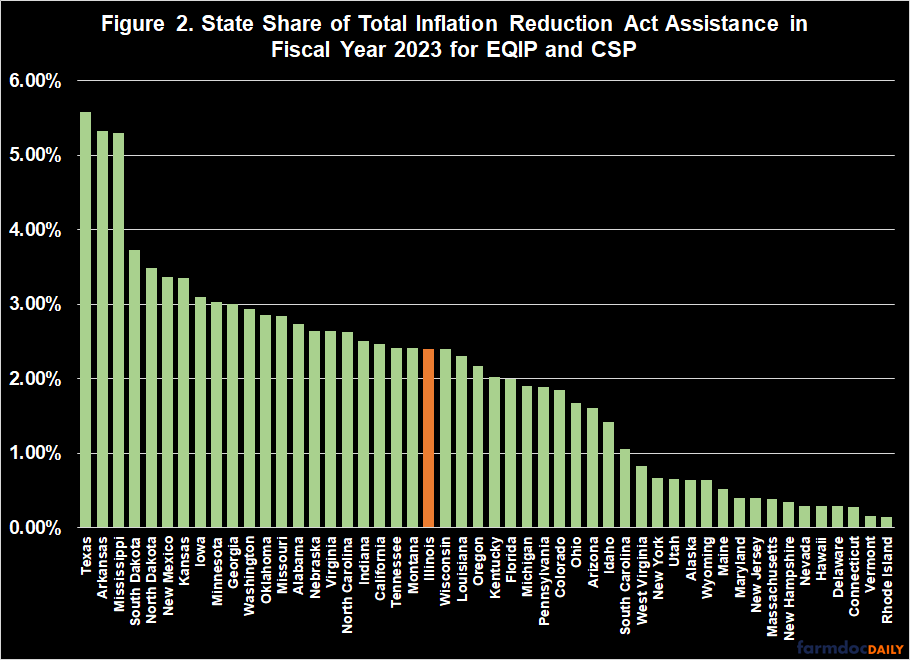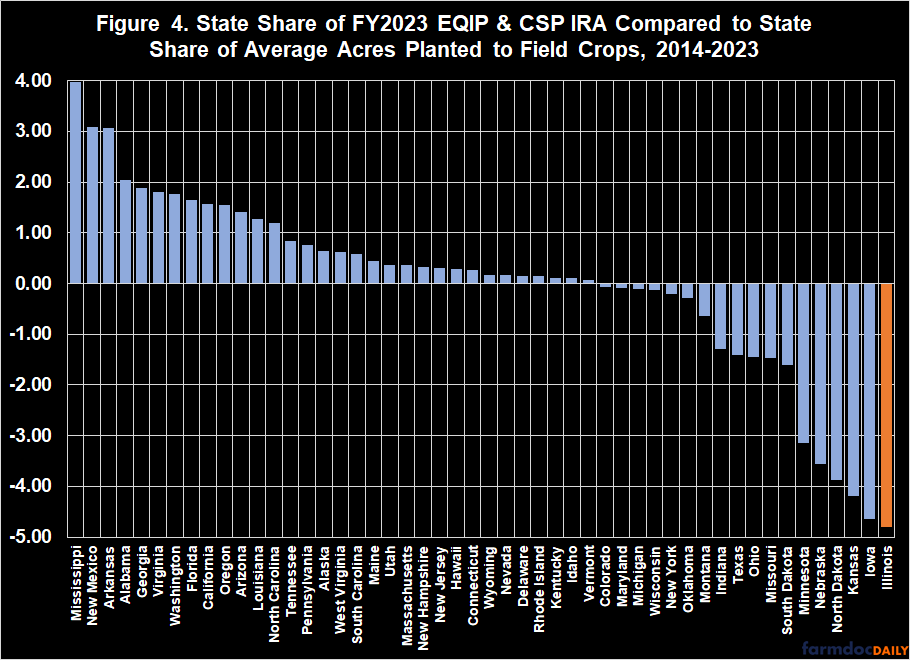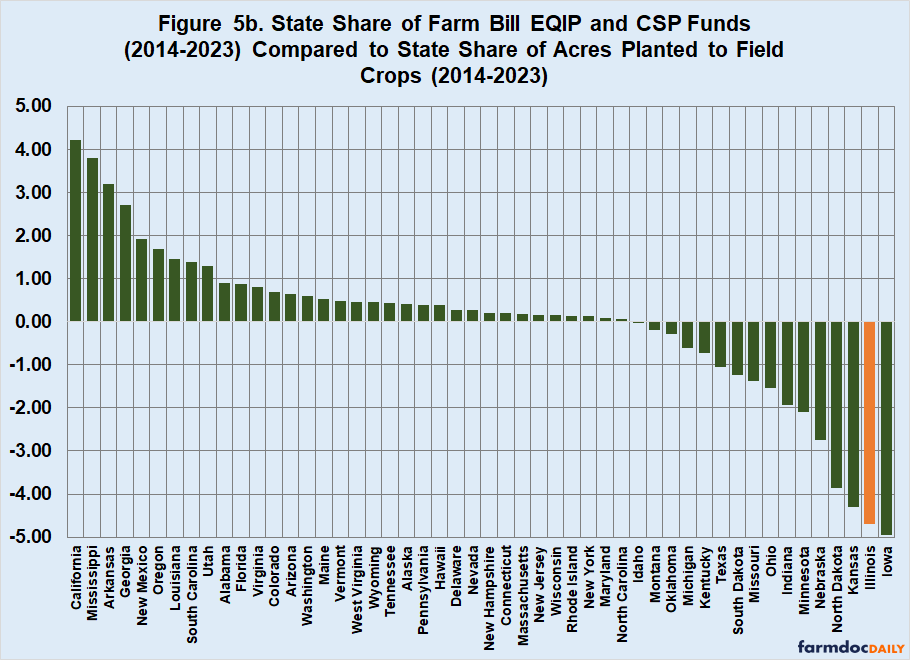Back to Policy Design: The Inflation Reduction Act’s Conservation Assistance
Labor Day arrives as August drops from the calendar; September signals the rapid approach of autumn, and with it this year the expectations for a record-breaking harvest (Hanrahan, August 26, 2024; U.S. Dept. of Labor, “History of Labor Day”; History.com, August 6, 2024). The first Monday in September has been the official celebration of Labor Day in the U.S. since June 28, 1894, when President Grover Cleveland signed into law the bill establishing it. The idea of a holiday to honor workers traces to September 1882 in New York City—an era of intense labor unrest during the Industrial Revolution and the tumultuous transition from an agricultural to a manufacturing economy (Carroll, September 5, 2011; JSTOR Daily, September 1, 2023; JSTOR Archives). Expectations are exceedingly low for much laboring by Congress on Farm Bill reauthorization in September, or before the elections in November. The work of policy analysis continues and this article returns to the Inflation Reduction Act’s additional funding for conservation assistance to farmers (farmdoc daily, August 1, 2024).
Background
In the Inflation Reduction Act of 2022, Congress instructed USDA that the additional $18 billion appropriated to Farm Bill conservation programs:
“shall be available for 1 or more agricultural conservation practices or enhancements that the Secretary determines directly improve soil carbon, reduce nitrogen losses, or reduce, capture, avoid, or sequester carbon dioxide, methane, or nitrous oxide emissions, associated with agricultural production” (P.L.117-169, Section 21001).
The four Farm Bill Conservation programs receiving the additional appropriated funding are: Environmental Quality Incentives Program (EQIP); Conservation Stewardship Program (CSP); Agricultural Conservation Easement Program (ACEP); and Regional Conservation Partnership Program (RCPP). As discussed previously, IRA conservation funding offers comparisons for policy design because funding was limited to a subset of practices (farmdoc daily, August 1, 2024). The discussion below reviews the CSP funding from the IRA in FY2023 and then works with potential measurements of the FY2023 IRA funding from EQIP and CSP.
Discussion
Updates to the Policy Design Lab have added fiscal year (FY) 2023 CSP assistance data as reported by USDA’s Natural Resources Conservation Service (Policy Design Lab, IRA; USDA-NRCS: RCA Data Viewer; USDA-NRCS, “Inflation Reduction Act Data Visualization Tool – Fiscal Year 2023”). The interactive map and table are also available in Figure 1. Beginning with the total by State, users can also select individual practices and compare allocations in FY2023, as well as the percentage of the national total by practice and State.
Figure 2 adds a State-by-State comparison of the combined IRA funding for EQIP and CSP in FY2023. Each State’s allocation is a percentage of the national total and States are ranked from largest to smallest. Texas, Arkansas, and Mississippi were the three States with the largest shares of FY2023 IRA EQIP and CSP funding. Illinois, by comparison, ranked 22nd and is highlighted in orange.
Figure 3 uses the total commodities receipts (crops and animals) reported by USDA for 2022 to work towards a meaningful measure of IRA conservation assistance that relates more directly to farming (USDA-ERS, “Data Files: U.S. and State-Level Farm Income and Wealth Statistics”). The bars in Figure 3 represent a score based on the difference in the State’s combined IRA allocation (EQIP and CSP) from the State’s share of the national total of all commodities receipts. By this measure, Mississippi received a larger share of IRA funding (5.3%) than its share of national commodities receipts (1.46%), for a score of 3.84. California ranks lowest, scoring -8.42; Illinois (orange) ranked 47th and scored -2.8 based on 5.21% of total commodities receipts but only 2.4% of combined IRA funding.
Figure 4 compares IRA funding and average acres planted to all field crops from 2014 to 2023 as reported by USDA-NASS (Quickstats). The score in Figure 4 subtracts the State’s share of IRA FY2023 combined (EQIP and CSP) funding from the State’s share of average acres planted to all field crops from 2014 to 2023. By this measure, Mississippi ranked highest with a 3.98 score based on its share of IRA funds (5.3%) above its share of acres planted (1.32%). Illinois ranks lowest (orange) with a -4.81 score (2.4% IRA share to 7.21% average acres planted).
Maybe most surprising (or not at all depending on one’s views) is how little the State-by-State outcomes under the IRA differ from those under these programs and Farm Bill funding (Policy Design Lab, Conservation). The FY2023 State funding allocations are similar to the combined financial assistance from EQIP and CSP in the Farm Bill. The top five states by share of the total are: Texas (5.93%); Arkansas (5.46%); California (5.11%); Mississippi (5.11%); and South Dakota (4.08%). Figures 5a and 5b provide the same measurements for EQIP and CSP combined funding in the Farm Bill from 2014 to 2023: Figure 5a compares State share of funding to State share of commodities receipts in 2022; and Figure 5b compares it to State share of average acres planted to field crops (2014-2023).
Concluding Thoughts
Working to analyze agricultural conservation policies using the additional funding appropriated by Congress in the Inflation Reduction Act of 2022 (IRA), this article includes an interactive map, table, and data presenting the IRA funding for CSP in FY2023. Following the map, the article works through further analysis of the State-by-State performance of the first year of the combined CSP and EQIP funding. Comparing the State’s share of IRA funds to its share of commodities receipts or average acres planted to field crops (2014 to 2023) provides a method to score IRA allocations, adding perspectives but not definitive, complete, or final evaluations. The comparisons seek to relate conservation funding to farm production (receipts or acres) in the State. The comparisons are not based on any measure of the natural resource issues or challenges in the States, however, although they are certainly connected. It is also important to note that conservation assistance is voluntary and much depends on farmers seeking out the funding and applying for it; of course, too little funding available will discourage farmers from applying.
The single most consequential policy design for these conservation programs is that Congress has placed caps on the assistance, either the total funds available or the total acres that can be enrolled. One consequence is that there is not enough funding (or acres) to meet the demand for conservation assistance from farmers (see e.g., farmdoc daily, September 28, 2023). Another is that programs like EQIP and CSP allocate this limited funding among a large number of conservation practices for an enormous number of natural resource challenges across millions of farms and fields in all 50 states. The additional funding for conservation provided by Congress in the IRA was historic and will help meet the demand for assistance from farmers—it is particularly important at a time of increased costs—but it is also limited (see e.g., farmdoc daily, May 23, 2024).
Finally, Congress instructed USDA to limit which practices are eligible for IRA funding. The practices USDA determines eligible will impact which farmers in which States are able to access those funds, as well as which conservation practices are adopted and assisted. It is therefore notable that the first year of funding allocations do not differ much from the last 10 years of Farm Bill funding allocations. Based on these comparison scores, the IRA funding allocations are not closely aligned with total commodities receipts (which includes both crops and animals). Potentially more important given the directive from Congress in the IRA which emphasizes soils, the funding allocations in FY2023 do not align with acres planted. These initial measurements and perspectives raise many questions. Further analysis will add much to an understanding of conservation policy design, including comparisons on a program-by-program basis and key practices, as will different measurements or farming-related comparisons.
References
Carroll, Kurt. “Celebrating Labor.” Library of Congress Blogs. September 5, 2011. https://blogs.loc.gov/law/2011/09/labor-day/.
JSTOR Daily. “Labor Day: A Celebration of Working in America.” September 1, 2023. https://daily.jstor.org/a-celebration-of-working-in-america/.
JSTOR Daily. “Labor Day.” https://daily.jstor.org/tag/labor-day/.
U.S. Dept. of Labor. “History of Labor Day.” https://www.dol.gov/general/laborday/history.
Coppess, J. and I. Majumdar. "An Inflation Question Not Asked: What About Conservation?" farmdoc daily (14):98, Department of Agricultural and Consumer Economics, University of Illinois at Urbana-Champaign, May 23, 2024.
Coppess, J. "Farm Bill 2023: NRCS Backlogs and the Conservation Bardo." farmdoc daily (13):177, Department of Agricultural and Consumer Economics, University of Illinois at Urbana-Champaign, September 28, 2023.
Coppess, J. "Policy Design Case Study: EQIP and the Inflation Reduction Act." farmdoc daily (14):143, Department of Agricultural and Consumer Economics, University of Illinois at Urbana-Champaign, August 1, 2024.
Coppess, J. "Policy Design Case Study: EQIP and the Inflation Reduction Act." farmdoc daily (14):143, Department of Agricultural and Consumer Economics, University of Illinois at Urbana-Champaign, August 1, 2024.
Hanrahan, R. “Pro Farmer Tour Finds ‘Spectacular’ US Soybean Crop.” Farm Policy News Summary, August 26, 2024.
History.com. “Labor Day 2024.” Updated August 6, 2024. https://www.history.com/topics/holidays/labor-day-1.
Disclaimer: We request all readers, electronic media and others follow our citation guidelines when re-posting articles from farmdoc daily. Guidelines are available here. The farmdoc daily website falls under University of Illinois copyright and intellectual property rights. For a detailed statement, please see the University of Illinois Copyright Information and Policies here.












